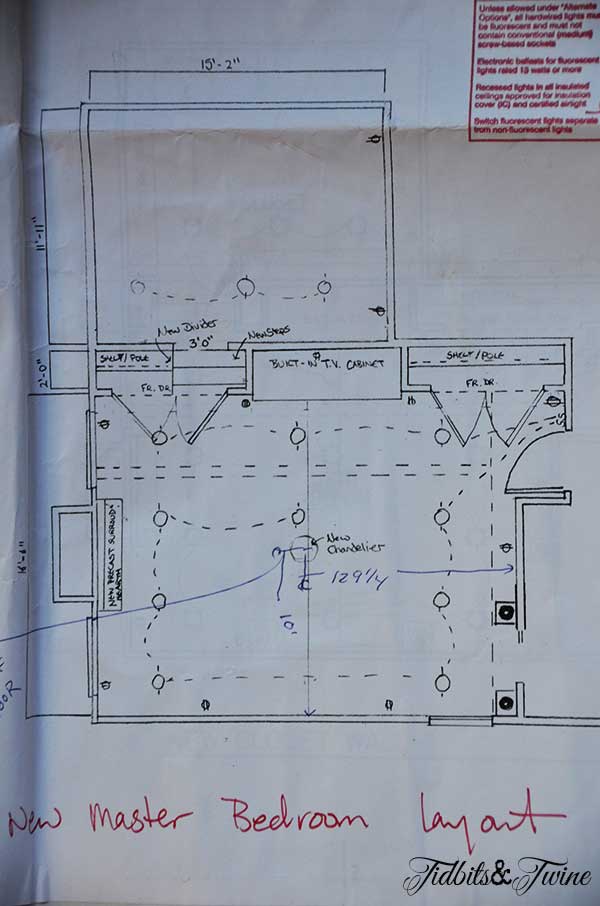4 easy steps to overcome your fear of making a design oops and finally tackle that decorating project you’ve been meaning to start!
Sometimes, if we feel too overwhelmed, it seems easier NOT to start a project at all for fear that we might make a “mistake” and end up with a space we hate.
Unfortunately, avoiding the task won’t help you create a space you love and will constantly weigh on you with the feeling that a room isn’t yet finished. And the truth is, no room is ever perfect and sometimes, the “mistakes” end up being our favorite part of the room!
So how can you overcome your fear of making a design oops and finally tackle that decorating project you’ve been meaning to start?
4 Steps to Overcome the Fear of Decorating
1. Have a plan!
If you haven’t already read Creating a Design Plan in 4 Easy Steps, now’s your chance! This article takes you step-by-step from:
- Finding your design inspiration
- Addressing your functional needs
- Determining the feel you want
- Finding the items that fit your goals
Following these steps will take a lot of the guesswork out of your project and help you to feel more confident with a plan to work toward. And for Step #3, be sure to look at Pinterest, Houzz, and Instagram to get ideas and inspiration. Create a “My Style” board for yourself to help you keep track of what you like (or even what you don’t!).
(You can follow my Pinterest board, Casual Elegance {decor} to see my personal style!)
2. Know Your Dimensions
Whether decorating a room from scratch or just looking for one piece of furniture to complete a room, it’s important to know your dimensions so that you don’t end up with a piece that’s too big or too small.
When decorating a room from scratch, always start by measuring the length of all of your walls, including dimensions for any windows, doors, openings, or architectural features. You should also know the height of your ceilings.
If you can, draw a simple floor plan on paper for you to reference when shopping. A common scale of measurement for a floor plan is 1/4″ = 1′. So, for example, if your wall is 10′ long, you’d draw a line on your paper that is 2 1/2″ long to represent a 10′ wall (10 feet divided by 4 = 2.5).

Even if you’re just shopping for one item, it’s still helpful to know your room’s dimensions, but at the very least you should know the dimensions of the other furniture pieces that are adjacent to what you are shopping for. For example, for a sofa table, you’ll need to know both the height and length of your sofa, as well as depth you have behind your sofa. For an end table, you’ll need to know the height of your sofa’s arms, as well as the depth.
Want to find the perfect coffee table? You can use this Coffee Table Guide to find the perfect one!
A handy reference for measurements in decorating can be found here: 25 Need to Know Measurements for Decorating!
3. Does it Match?
A lot of times we get hung up on whether an item will “go” with existing items in our home. As you might know, I’m not a fan of the matchy matchy look so I never buy a furniture set from a manufacturer. While a set does take the guesswork out of furniture buying, it doesn’t give a custom look and often, isn’t as interesting to look at as a grouping of varied furniture pieces. So how do you know if what you buy will match?
a. Scale – This is similar to knowing your measurements but I can’t stress its importance. You want the scale of your furniture to be consistent. This doesn’t mean that your sofa table has to be the exact same length as your sofa but that proportionately, it should be scaled the same. This doesn’t just include the measurements of the item, but also the form. For example, a sleek, modern sofa with stainless steel legs is better paired with a similarly sleek sofa table. In general, items should have similar visual weights.
b. Feel – Be sure to refer back to your Design Plan to make sure that the items you select all reflect the overall feel you are trying to create in your space. Ensure that the pieces you buy are similarly matched in terms of the feelings they evoke.
c. Color – Within your color palette, it’s okay to use varying shades of each color. Decide upfront whether you want your space to be mostly warm colors or mostly cool to avoid jarring combinations. And when adding an accent color, be sure to take into account the color’s undertone. For example, a warm blue works better as an accent in a warm-colored room, whereas a cool blue will seem a bit out-of-place. That being said, since you’re creating a space for YOU and no one else, go with your gut and break the “rules” if you see fit!
d. Shape – Look for elements within each piece that have a similar shape. For example, all of the seating in a room might have rounded arms, or all of the chairs in a dining room might have low-profile backs.

4. Try Before You Buy
This is a HUGE help to me because mental visualization doesn’t always do the trick. My poor husband can’t make sense of what’s staying and what’s going because so much decor rotates through our home every month! For accessories, most stores have great return policies that allow you to take something home, try it in your space and return it if it doesn’t work out. Be sure to always save your receipt and take extra good care of the item while in your possession. This will not only help you have a smooth return process should you need to return the item, but it’s always considerate to take care of the item so that it’s still in pristine condition for the next person who decides to buy it!
But what about those items that you can’t “test drive”? Having a Design Plan definitely helps, but you can virtually try before you buy with Olioboard. I am a huge fan of this {free} online site because it takes a lot of the guesswork out of knowing whether something will work in your space and it is so easy to use! It is a web-based program and it self-explanatory and allows you to design a room right away.

You can design in either 2D or 3D and can even upload a photo of your own space. So if you want to know whether a piece of art you found will look good in your room, just upload an image of your room and then you can drop the art into your space! There are tons of items already available within Olioboard for you to work with, but you can also upload images that you’ve taken yourself or that you’ve found online.
Answers to commonly asked questions about Olioboard can be found here.
Additional Tips & Tidbits
- If you LOVE it, go for it! Sometimes, we select items or furnishing that are completely irrational. Maybe they are too big or too small or just seem out-of-place, but they grab our attention and we fall in love. If this happens, go with it! If you love it, you’ll be happy with it and you can always figure out a way to make it “work” later.
- It’s okay to mix and match furniture styles. For tips on how to do this without having the room look chaotic, read Tidbit Tuesday: A Guide to Mixing and Matching Furniture Styles.
- With the exception of your Inspiration Piece, it’s usually easier to buy your main pieces first and then layer in your smaller items or accessories.

Join the Community
Let’s keep in touch! Get exclusive artwork plus the latest news delivered directly to your Inbox!
